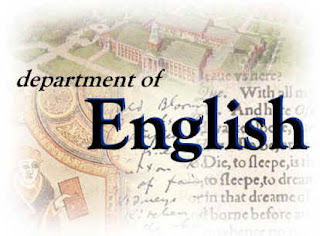Noun
A noun is a word that names a person, place, thing, or idea. Examples of nouns include dog, cat, house, car, book, teacher, student, happiness, and freedom.
Nouns can be classified into different types, such as common nouns, proper nouns, concrete nouns, abstract nouns, countable nouns, and uncountable nouns.
- A common noun is a general name for a person, place, or thing. For example, city, boy, and dog are common nouns.
- A proper noun is a specific name for a person, place, or thing. Proper nouns are always capitalized. For example, Dhaka, Rahim, and Bangladesh are proper nouns.
- A concrete noun is a noun that can be perceived by the five senses. For example, table, chair, and house are concrete nouns.
- An abstract noun is a noun that cannot be perceived by the five senses. For example, happiness, freedom, and love are abstract nouns.
- A countable noun is a noun that can be counted. For example, books, boys, and cats are countable nouns.
- An uncountable noun is a noun that cannot be counted. For example, water, air, and money are uncountable nouns.
Nouns can also be singular or plural. A singular noun refers to one person, place, or thing. For example, cat is a singular noun. A plural noun refers to more than one person, place, or thing. For example, cats is a plural noun.
Nouns can be used in different ways in a sentence. They can be the subject of the sentence, the object of the verb, the object of a preposition, or the complement of a verb or adjective.
- The subject of the sentence is the person, place, or thing that is doing the action of the verb. For example, in the sentence, The cat sat on the mat, the subject of the sentence is cat.
- The object of the verb is the person, place, or thing that is receiving the action of the verb. For example, in the sentence The boy kicked the ball, the object of the verb is ball.
- The object of a preposition is the noun or pronoun that comes after a preposition. For example, in the sentence The book is on the table, the object of the preposition is table.
- The complement of a verb or adjective is the noun or pronoun that completes the meaning of the verb or adjective. For example, in the sentence The man is a teacher, the complement of the verb is teacher.
Nouns are an important part of speech in English. They are used to name people, places, things, and ideas, and they can be used in many different ways in a sentence.
let’s go through the Multiple Choice Questions (MCQs) related to nouns along with their explanations, as presented in the reference text.
MCQs on Nouns
-
Which one of the following is the correct sentence?
- A. Shaon is the actress and singer.
- B. Shaon is both the actress and singer.
- C. Shaon is both an actress and a singer.
- D. Shaon is a actress and singer.
- Answer: C
- Explanation: When referring to multiple professions or roles, we use the indefinite article (‘a’ or ‘an’) before each noun. ‘Actress’ and ‘singer’ are distinct roles, so both require the article.
-
Which of the following is correct?
- A. The Tajmahal is one of the wonders of the world.
- B. Sahara is in Africa.
- C. The Ganges flows down from the Himalayas.
- D. Bay of Bengal lies to the south of Bangladesh.
- Answer: A + C
- Explanation:
- A is correct because ‘The Taj Mahal’ is a specific monument, requiring the definite article ‘the’. Additionally, ‘one of the wonders’ is a standard phrase.
- B is incorrect because ‘Sahara’ is a proper noun (name of a desert) and doesn’t need an article.
- C is correct because ‘The Ganges’ and ‘The Himalayas’ are specific geographical entities, necessitating the definite article.
- D is incorrect because ‘Bay of Bengal’ is a proper noun and doesn’t require an article.
-
___ love is such ___ beautiful thing.
- A. no article, a
- B. a, no article
- C. the, a
- D. a, the
- Answer: A
- Explanation: ‘Love’ is an abstract noun typically used without an article in a general sense. ‘A beautiful thing’ is a standard phrase with the indefinite article ‘a’.
-
Do you know the name of ___ artist who painted this portrait?
- A. a
- B. no article
- C. an
- D. the
- Answer: D
- Explanation: The definite article ‘the’ is used here because the artist is specific – the one who painted the portrait in question.
-
One of Akbar’s most vigorous opponents during his lifetime had been ___ outstanding scholar Sheikh Ahmed and, like Akbar, he was also venerated as ___ perfect man by his own disciples.
- A. the, the
- B. an, a
- C. an, the
- D. the, a
- Answer: B
- Explanation:
- ‘An outstanding scholar’ uses the indefinite article ‘an’ because it refers to one among many outstanding scholars.
- ‘A perfect man’ uses ‘a’ because it signifies one of many individuals considered perfect by his disciples.
-
Which one of the following is the correct sentence?
- A. All that glitters is not to be gold.
- B. All that glitters is not gold.
- C. All that glitter is not gold.
- D. All that glitters are not gold.
- Answer: B
- Explanation:
- The correct proverb is “All that glitters is not gold.”
- ‘All that glitters’ is considered a singular subject, requiring a singular verb (‘is’).
- ‘Glitter’ is a verb, not a noun, so option C is incorrect.
-
We have a lot of ____ to do in summer.
- A. many works
- B. much works
- C. a lot of work
- D. a lot of works
- Answer: C
- Explanation: ‘Work’ is an uncountable noun and cannot be pluralized. ‘Much’ is used with uncountable nouns, while ‘many’ is for countable nouns. ‘A lot of’ can be used with both countable and uncountable nouns.
-
I saw a thirteen-____ old boy swimming in the river.
- A. years
- B. year
- C. years’
- D. year’s
- Answer: B
- Explanation: When using a number to describe age, we use a hyphenated adjective with the singular form of ‘year’.
-
The house was built of ____
- A. bricks
- B. brick
- C. the brick
- D. a brick
- Answer: B
- Explanation: ‘Brick’ is a material noun and is used without an article in a general sense.
-
The scenery of Cox’s Bazar ____ charming.
- A. are
- B. is
- C. has
- D. have
- Answer: B
- Explanation: ‘Scenery’ is an uncountable noun and takes a singular verb (‘is’).
These MCQs cover various aspects of noun usage, including articles, countable/uncountable nouns, subject-verb agreement, and compound nouns. Understanding these concepts is crucial for accurate and effective communication in English.
If you have any other questions or would like to explore more MCQs or grammar topics, feel free to ask!




